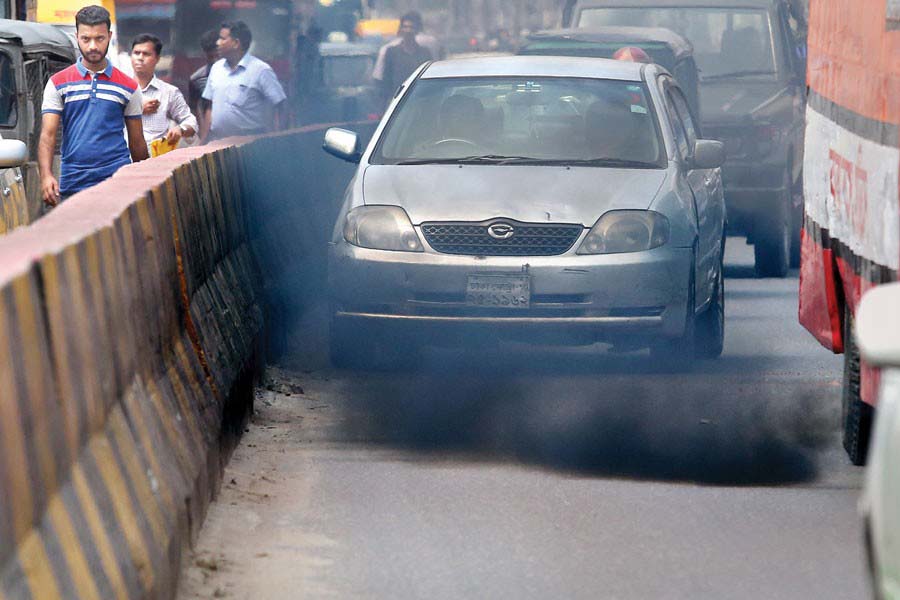
Published :
Updated :

The Environment, Forest and Climate Change minister, reportedly, has asked the relevant authorities to furnish a list of public buses "having over 20 years (of) their economic life, in an effort to control air pollution in the capital." Could this be the first step in an effort to bring to heel the problems associated with vehicle emissions contributing to Dhaka's air pollution? A laudable approach, but not a new one! Policymakers have been talking about revamping the chaotic bus transportation system in the capital city for years and nothing much has happened. The bus owners' association has proved surprisingly resilient in resisting all sorts of reform programmes undertaken under various governments, but the state of air pollution in this city has broken all past records and this has to change.
Obviously, there will be loud protests from bus companies, but the government can no longer ignore the problems associated with pollution emitted by worn-out and road-unworthy buses that cater to the bulk of people's needs when it comes to public transportation in and around the city. The state-owned BRTC has never been a major player in Dhaka city's road transportation. The private sector continues to be a dominant operator. Because of failure to enforce rules and regulations concerning environmental protection and the political prowess of the transport company owners and their respective associations, the transport sector remains non-responsive to the call for tackling the problem of pollution.
Starting from then-Mayor Anisul Huq's plans to introduce 4,000 buses under seven companies back in 2017 to more recent statements by both mayors of the bifurcated city, there has been little or no progress on the issue. While all passenger 4-wheel vehicles pay Advance Income Tax (AIT) to renew fitness certificates and pay road tax annually, such laws apparently do not apply to city buses. The week-long drives conducted periodically to check vehicle fitness and other papers are for 2-wheel, 3-wheel and 4-wheel vehicles, except buses - or so is the public perception. For reasons beyond understanding, this gross lack of enforcement has allowed for this situation to develop in the first place. Banged-up buses spewing black smoke out of tail pipes is a common sight on every major road in the city. These dilapidated public transports are a major cause of air pollution in the city, and no amount of sugar-coating can hide that fact!
In the midst of such an anarchic situation, the first metro rail service (MRT-6) commenced last year has been a resounding success! The route on which MRT-6 travels, has seen the number of privately-run buses reduced by as much as 50 per cent (in some areas) because people would rather travel in comfort and safety over-and-above the awful gridlock that is commonplace on Dhaka roads. Demand for metro rail has exceeded all expectations and forecasts by city planners. It is smooth and efficient and does not require fossil fuel to run. It is more environmentally friendly than buses as it runs on electricity.
This is what city planners need to focus on now. There has been much talk since last December about financial commitment being made (or in the process of being made) by the Asian Development Bank (ADB) and South Korea for MRT-1. The focus on negotiating terms of finance is imperative and should be concluded as fast as possible, the tendering process needs to be prioritised so that work on MRT-1 line (east-west connectivity) can happen sooner than later. The future is electricity-powered metro as against fossil-fuel run buses on Dhaka roads.
mansur.thefinancialexpress@gmail.com


 For all latest news, follow The Financial Express Google News channel.
For all latest news, follow The Financial Express Google News channel.